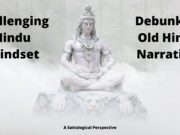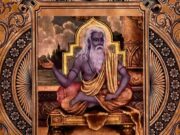The modern education systems are plagued by commercialism because of its exclusive focus on common skills. If we look carefully at the ancient education systems as evidenced in texts such as Mahabharata & Ramayana, we see a completely different education system. A student is ready to face the world at a mature age of 14 years. The ancient education system ties well with the biological and mental capacity of a growing child. As the adolescence is reached and so the entire education of the pupil is also finished. The next comes the period of application where the child has to display his skills in the respective chosen profession. Gainful employment is already found locally based on the skills acquired. We do not see any pattern of unemployment. We do not see past kings producing job reports because education itself creates an employable individual. In today’s context a student is given skills based on the needs of the industry which is making profit for an individual. For profits to increase they need trained manpower and therefore the education system is purposely created to provide that manpower. The difference between the education in the ancient vedic system and the modern education system is that the former creates specialists or leaders while the latter creates generalists or employees.
Expecting leadership from a product of the modern education system is a hard task. Expecting leadership from a product of the ancient education system is given.
The core concepts of the education system of the ancient Vedic system are based around Permanence of Life, Cyclical Time, Karma, Sadhana and Guna & Pravritti based education. This is seen in the lives of five pandava brothers. The education on permanence of Life creates a very positive attitude in the pupil. The education on Cyclical time creates hope. The education on Karma creates responsibility for the pupil. The education of Sadhana creates a disciplined pupil. The education of Guna (sat, rajas, tamas) removes procrastination attitudes in the pupil. The understanding of Gunas also helps in building a strong team as well as a deep understanding of intrinsic time cycles of the day when the tasks need to be performed. Pravritti means acquired Vritti. Vritti means natural inclination. Pravritti is created by giving an education based on the vritti of the person.
Arjun was inclined towards archery and so his specialized education was focused on archery while learning all other warfare & administrative skills. Arjuna was chosen to be the chief of the Armed Forces. Similarly, Yudhishthir was trained to be the ultimate law keeper because of his vritti. Bhima was chosen to be the send in line to Yudhishthir, so he was trained in law as well as his chosen form of fighting skills. Nakul was chosen to be the manager of logistics because that was his vritti. Sahadeva was chosen to be the King’s representative and he specialized in his own chosen form of warfare.
The priority is also decided based on Vritti because that creates a self-motivated individual. The priority is also reinforced through regular interaction with saintly people who are following the Vedic traditions or sampradayas. Education is a constant feature in the ancient Vedic systems of knowledge. Just because a pupil passes out from the school, it doesn’t mean the education is complete. Reinforcement of knowledge is a constant feature as part of social interaction. Reeducation or Reinforcement of education is attained through constant visits by the pupils to the respective hermitages. The teachers also sometimes visit the pupils to check on them. Narada Muni visits his pupil Yudhishthir to verify whether he has learnt the art of delivering justice properly. Modern education usually ignores the pupil-teacher connection. Once a student has passed out of the university, the relationship ends from both sides because it was commercial in the first place. Between the age of 5-10, core concepts of Sadhana are introduced. Between 10-12 years of age, vrittis & Gunas are identified and appropriate specialization paths are allocated. Between the ages of 12-14, specialized education & skills based on Vritti & Guna are given to the student. After the age of 14, the application of the education & skills are tested.
Students are given tasks according to their education and further testing is done to ensure that the student can become an asset to the society.
The important question then is ‘how to implement?’. In the modern chaotic society, some of these principles can be adopted for those who have already crossed the education threshold. The first is to understand the vritti & guna of self. Then, creating reeducation opportunities based on the vritti & guna. And after that reskilling a person based on vritti & guna. When we reevaluate a person based on vritti & guna then we identify additional avenues for improvement. The outcome of this model is self-content, Self-confident and a creative individual. It also re-energizes the person to an extent where an individual derives pleasure in self-created or even allotted tasks.
The pedagogy of reeducation relies on self-assessment and then a guided assessment with an expert. For a child this system should begin at the age of five onward, and it can be done by a parent or a teacher at home. The future of that child will be very bright.
- Aditya Satsangi is a popular author of Transcending the Mind: Yog Sutra As It Is (Sattology) – Buy the book here














